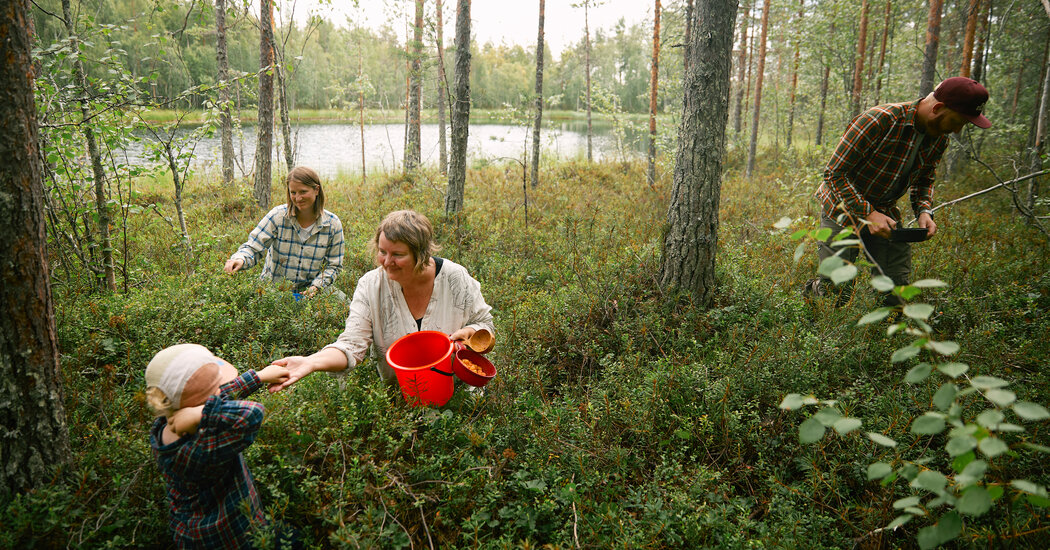A pot of birch sap simmered on Eva Gunnare’s stove. It was an early morning in May in Jokkmokk, a small Swedish town in the Arctic Circle, and outside the snow was melting. On the table sat a plate of cookies made with dried bilberries, a native fruit that Ms. Gunnare had foraged the previous season.
“Most Swedish people eat blueberries imported from abroad,” she said, pouring some sap into a small shot glass. “They do not know we have these delicious bilberries in our own backyard.”
For over a decade, Ms. Gunnare, a 56-year-old Swedish woman, has been trying to restore people’s relationship with nature by teaching them how to forage. Through her lessons on picking wild herbs, identifying edible plants and making dandelion honey, among many others, she aims to help locals and foreign visitors alike better understand nature.
Her approach differs from other tourist operators in the region, who often focus on outdoor expeditions such as trekking or skimobiling. These, Ms. Gunnare believes, do not always help people better understand or respect their environment.
“I don’t want people to run through nature,” she said. “I want them to crawl.”
Jokkmokk, with a population of about 3,000 people, attracts domestic and foreign tourists year-round. During winter, tens of thousands of visitors arrive for the Winter Market, a 400-year-old event that celebrates the Sámi, the Indigenous people of northern Scandinavia, Finland and western Russia. Others are drawn by the promise of seeing the northern lights, or to ski and dog sled. In the summer, many tourists come to trek and canoe through national parks.
Part of the region’s appeal is its pristine nature. Sometimes called “Europe’s last wilderness,” it is home to some of the last untouched old-growth forests on the continent.
“People come here to experience something wild and remote, but many people just rush through it,” Ms. Gunnare said. “They don’t stop to notice the flora and fauna. They don’t always see that some of it is not doing too well.”
Forests cover about 70 percent of land in Sweden. But primary forests, or old-growth forests, which consist of native tree species that are undisturbed by human activity, have largely been cut down. Now, the country’s forests consist mostly of tree plantations used for logging, which can have devastating environmental impacts. These plantations, usually monocultures, are far more vulnerable to disease and natural disasters than…
Click Here to Read the Full Original Article at NYT > Travel…
